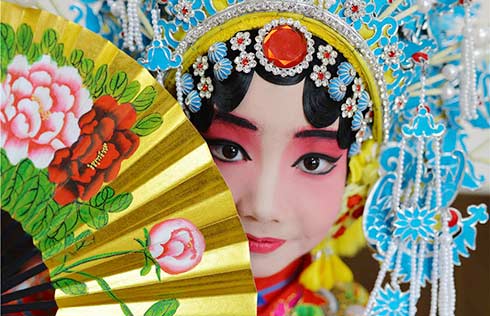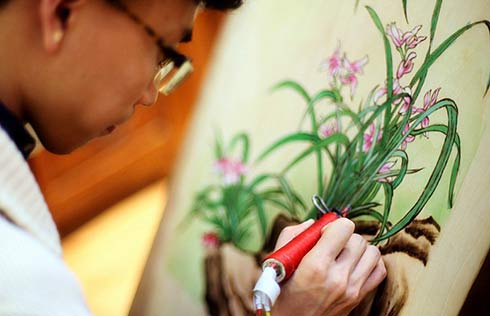


Duanwu, popularly known as Dragon Boat Festival, will be upon us soon. Pauline D Loh reflects on its legends and traditions.
He walked into the river a frustrated and depressed man, enraged by the corruption at court and his helplessness in correcting the situation. Qu Yuan, patriot, poet and exiled minister of the Chu State during the Warring States Period (475-221 BC), marked the fall of his country by committing suicide.

Before he died, he had walked among his people, collecting folklores, songs and odes. He also produced some great poetry reflecting his life and turbulent times.
Qu Yuan was much loved by the common folk, and they honored him by creating a festival around the anniversary of his death. They had row-boat contests, and they wrapped rice in bamboo leaves which they threw into the river - presumably so the water creatures would be distracted by the free food, and spare the poet's body.
That was more than 2,000 years ago.
These days, the festivities still commemorate Qu Yuan, and his name comes up again every year as all Chinese celebrate Duanwu on the fifth day of the fifth lunar month. It is also the height of summer, and several traditions have evolved around that.
To cool off, young men from both cities and villages would participate in rowing contests, fuelled by the pounding of drums and the cheering of the crowds. The boats would be decorated with pennants and flags, and prows topped by colorful dragon heads - hence the Dragon Boat Festival.
These river races have become international affairs as well, with foreigners participating as enthusiastically as the locals in China, Singapore and many of the Chinatowns abroad.
Another element of the festivity is the bamboo- or reed-leaf wrapped rice dumplings that were originally designed as an offering to the river gods. They now come in many shapes and flavors, and may range from sweet to savory to please different palates - now usually human.
In the south, meat dumplings prevail, with either chicken or pork fillings complemented by chestnuts, mushrooms and a salted egg yolk or two. Often, lentils or beans are added.
There are also the sweet dumplings, eaten most often in the scenic area of Hangzhou and Suzhou, where the delicacy of the snacks reflect the beauty of the scenery.
Further north, the dumplings evolve yet again, with a variety of filling drawn from floral flavors, such as rose and osmanthus to the traditional sweet red bean or sweet mung bean pastes so popular in Beijing snacks.
In our family, Duanwu starts well before the actual date. About a week before, someone in the family will raise the clarion call and we will gather in an appointed kitchen to season, wrap, steam, and catch up on the family gossip.
Wrapping dumplings is a family affair, and it is this collective effort that simplifies the rather complicated culinary process.
My mother often comes around at this time, taking on the multiple roles of head chef and narrator-of-stories as we gather for the annual rice dumpling wrapping session. This would be when she reaches back in time for stories of how her mother used to make dumplings in our old family compound.
My grandmother was an erratic cook when it came to the daily dining table, but she was an excellent occasional chef - turning out festive delicacies with precision and art, a fastidious festival cook who spent three days wrapping hundreds of dumplings that would ultimately be distributed to clan and horde.
The first day would be spent picking through the glutinous rice, which would be soaked in three changes of water. The bamboo leaves would also be soaked in hot water, and then individually scrubbed to remove the dirt that had accumulated on the surface. This is something I still pay great attention to, as the bamboo leaves comes into direct contact with the food.
The second day is spent cutting up the meat and marinating it in spices and sauces, and finally on the third day, the charcoal fires are started in the courtyard and the cauldrons used to cook the dumplings readied.
Traditionally, the dumplings needed to be boiled for at least three to four hours as the glutinous rice needs that long a cooking time to keep for a week or two. This was in the days of erratic or non-existent refrigeration.
I am passing you two recipes from our family repertoire. Gather your family around one day this week and celebrate the bonding with a dumpling wrapping session. You'll find that no matter what the result of your culinary experiments, they will always taste better than any store-bought dumpling, even if they are all perfect pyramids.
Start with these tips from my mother:
Soak the bamboo leaves in hot water and wipe each one with a damp cloth.
Season the meats generously with good quality soy sauce. The long cooking process leaches the salt and dilutes the flavors.
After the dumplings are boiled for the requisite time, hang them up to drip dry. They must be completely dry before you store them away.
Relax, have fun, don't worry. It's all edible, even if they don't look all that good.



